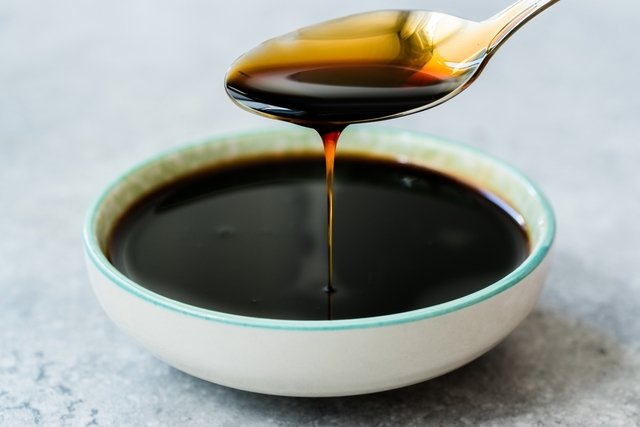Sugarcane molasses is a natural sweetener that can be used to replace sugar, bringing more benefits, especially as it contains more nutrients such as calcium, magnesium and iron. Regarding the amount of calories, sugarcane molasses has fewer calories per 100 grams due to the presence of fiber, however, you should not overuse the amount as it can also make you gain weight.
Molasses is a syrup produced from the evaporation of sugarcane juice or during the production of rapadura, and has a strong sweetening power, and around 1 tablespoon per day is recommended to guarantee its benefits. This natural sweetener can be found in health food stores, supermarkets or made at home.

Main health benefits
Due to its nutrients, sugarcane molasses can bring the following health benefits:
- Prevent and combat anemiaas it is rich in iron;
- Help maintain bone health and prevent osteoporosis, as it contains calcium;
- Help relax and control blood pressuredue to its magnesium content;
- Promote muscle contractionas it contains phosphorus and potassium;
- Strengthen the immune systemas it contains zinc.
Despite the benefits, molasses is still a type of sugar and should be consumed in moderation, and it is important to remember that it is not a good option in cases of diabetes or kidney disease.
How to make sugar syrup at home
Sugarcane molasses can be made at home through a very time-consuming process, in which sugarcane juice is cooked and slowly boiled in a pan without a lid for several hours until a more concentrated mixture is formed. To obtain the best results, the pH of the mixture must be maintained at 4, and it may be necessary to add lemon to acidify the mixture.
Furthermore, during the process it is also important to remove the impurities that accumulate at the top of the broth in the form of foam.
When the molasses is already thicker and bubbling, you must wait for it to reach 110ºC and then remove it from the heat. Finally, the molasses needs to be strained and placed in glass containers, where after being covered, it must be stored with the lid facing down until it cools.
Other natural sugars
Other natural sugar options that can replace white table sugar are brown and demerara sugar, which are also derived from sugar cane, coconut sugar and honey. The following table provides nutritional information for 100 g of each type of sugar:
It is important to remember that all types of sugar, even natural and organic ones, should be consumed in moderation, as excess sugar can cause problems such as high triglycerides, high cholesterol, diabetes and fatty liver. See more about the types of sugar.
Other natural and artificial sweeteners
Sweeteners are options with zero or low calories that can be used to replace sugar, help you lose weight and control diseases such as diabetes. There are artificial sweeteners, such as Monosodium Cyclamate, Aspartame, Acesulfame Potassium and Sucralose, and sweeteners from natural sources, such as Stevia, Thaumatin and Xylitol.
See the table below for the number of calories and sweetening power of these substances:
As some artificial sweeteners may be linked to health problems such as headaches, nausea, changes in intestinal flora and even the emergence of cancer, the ideal is to use natural sweeteners. Furthermore, in cases of high blood pressure and renal insufficiency, one must be aware of the sodium content of sweeteners, and it is important to remember that patients with renal insufficiency should avoid using Acesulfame Potassium, as they normally need to reduce potassium intake in the morning. diet.

Sign up for our newsletter and stay up to date with exclusive news
that can transform your routine!
Warning: Undefined array key "title" in /home/storelat/public_html/wp-content/plugins/link-whisper-premium/templates/frontend/related-posts.php on line 12
Warning: Undefined array key "title_tag" in /home/storelat/public_html/wp-content/plugins/link-whisper-premium/templates/frontend/related-posts.php on line 13



